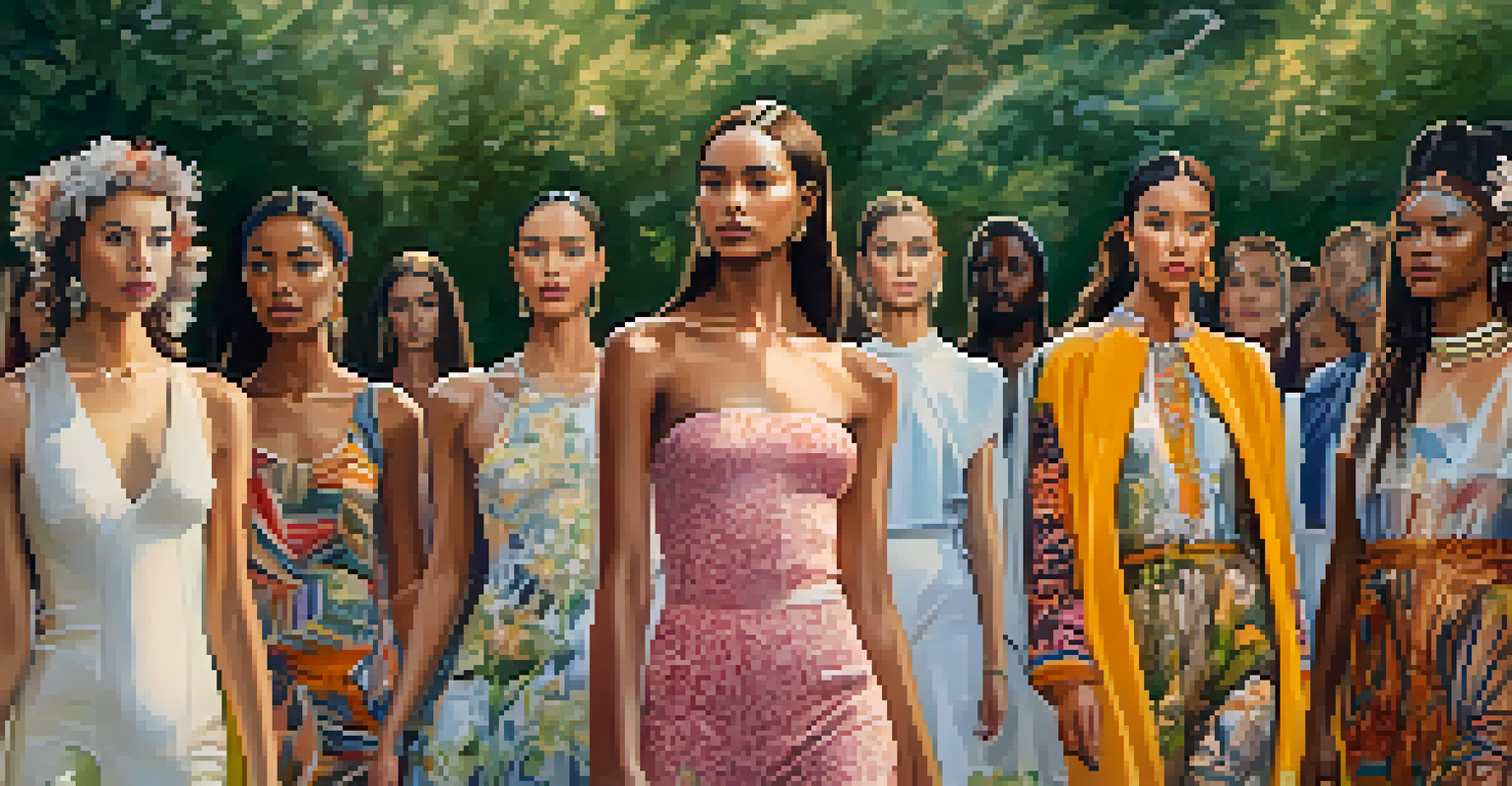Cultural Appropriation: Hollywood's Controversial Fashion Choices

Understanding Cultural Appropriation in Fashion
Cultural appropriation occurs when elements of one culture are taken by another, often without permission or understanding. This is particularly evident in fashion, where designers may borrow traditional garments or symbols from marginalized cultures. The controversy arises when these elements are used for profit, while the original culture receives little recognition or respect.
Cultural appropriation is the act of taking or using elements from a culture, often without permission or understanding.
For example, think of a popular designer featuring a Native American headdress in a runway show. While the headdress holds deep cultural significance, its use in a high-fashion context can trivialize its importance. Such instances highlight the need for sensitivity and awareness in fashion choices.
Ultimately, understanding cultural appropriation is crucial for fostering respect and appreciation between cultures. It opens the door to discussions about ownership, representation, and the responsibility that comes with using elements from other cultures.
Hollywood's Role in Cultural Appropriation
Hollywood has a long history of cultural appropriation, often depicting cultures in ways that reinforce stereotypes. From casting choices to costume designs, the film industry frequently borrows from diverse cultures, sometimes overlooking the nuances that make each culture unique. This lack of depth can lead to misrepresentation and perpetuates harmful stereotypes.

An example is the use of Asian-inspired aesthetics in movies that fail to accurately represent Asian cultures. Such portrayals can reduce rich, complex traditions to mere visual tropes, stripping them of their significance. As a result, audiences may form skewed perceptions about entire cultures based on these limited depictions.
Cultural Appropriation in Fashion
Fashion often borrows from marginalized cultures, raising concerns about respect and recognition.
Hollywood's influence is immense, and it has the power to shape public understanding of cultures. Therefore, the responsibility lies with filmmakers and designers to approach cultural elements thoughtfully, fostering a richer, more respectful dialogue.
The Impact of Social Media on Fashion Choices
Social media platforms have amplified discussions about cultural appropriation, making it easier for voices to be heard. Influencers and activists often call out instances of appropriation, pushing for accountability in the fashion industry. This shift has led to greater scrutiny of designers and their collections, encouraging more thoughtful representations.
Fashion is about more than just clothes; it's about culture, identity, and expression, and we must tread carefully in our borrowing.
For instance, a viral post might showcase a celebrity wearing a traditional garment without understanding its significance. The backlash that follows can lead to conversations about the importance of cultural context, prompting both consumers and creators to rethink their choices. In many ways, social media serves as a modern-day town square for discussing these issues.
As we navigate this digital landscape, it's crucial for everyone to engage in these conversations. By amplifying diverse voices and perspectives, we can foster a more inclusive and respectful fashion culture.
Examples of Controversial Fashion Moments
There have been several high-profile fashion moments that sparked controversy due to cultural appropriation. One notable example is when a major brand released a collection featuring traditional African prints without crediting the cultural origins. This move prompted outrage and highlighted the importance of acknowledging the sources of inspiration.
Another instance involved a pop star who wore a traditional Chinese dress at an awards show, which many felt was inappropriate given the lack of context or respect. Such moments serve as reminders that fashion choices can have deeper implications, often resonating well beyond the runway.
Hollywood's Misrepresentation Issues
The film industry frequently depicts diverse cultures in ways that reinforce stereotypes and overlook their complexity.
These controversies underscore the need for designers to approach cultural elements with care. By prioritizing collaboration and dialogue, the fashion industry can move toward a more respectful and inclusive future.
The Fine Line Between Inspiration and Appropriation
Distinguishing between cultural inspiration and appropriation can be challenging. Inspiration can be a beautiful way to celebrate another culture, while appropriation often involves taking without understanding or respecting the original context. The key lies in the intent and execution of the fashion choices made.
For example, collaborating with artisans from a particular culture to create a collection can be seen as a respectful homage. In contrast, simply adopting elements without context can come off as exploitative. This highlights the importance of dialogue and partnership in the creative process.
Ultimately, navigating this fine line requires a conscious effort to educate oneself about the cultures involved. By doing so, designers can create meaningful fashion that honors its origins rather than appropriating it.
The Role of Designers in Addressing Appropriation
Designers play a pivotal role in how cultural elements are represented in fashion. They have the power to either perpetuate stereotypes or foster understanding through their work. This responsibility calls for a more thoughtful approach to sourcing inspiration and engaging with different cultures.
For instance, some designers have begun to collaborate with cultural representatives to ensure authenticity and respect in their collections. This practice not only honors the source culture but also enriches the designer's work, creating more meaningful pieces that resonate with a broader audience.
Social Media's Role in Accountability
Social media has amplified discussions about cultural appropriation, encouraging greater accountability in the fashion industry.
By actively involving diverse voices in the design process, the fashion industry can take steps toward rectifying past mistakes. This collaborative approach can pave the way for a more inclusive fashion landscape.
Future Trends in Fashion and Cultural Sensitivity
As conversations about cultural appropriation continue, the fashion industry is starting to embrace more inclusive practices. Brands are increasingly recognizing the importance of cultural sensitivity and the need to engage meaningfully with diverse communities. This shift is encouraging a more thoughtful approach to design and representation.
Emerging trends include greater transparency in sourcing inspiration and the prioritization of ethical collaborations. Designers are also leaning toward storytelling that honors the narratives behind the cultural elements they incorporate, fostering a deeper connection with their audience.

Looking ahead, it's essential for the fashion industry to remain vigilant and committed to cultural respect. By doing so, it can create a future where fashion celebrates diversity rather than appropriates it.